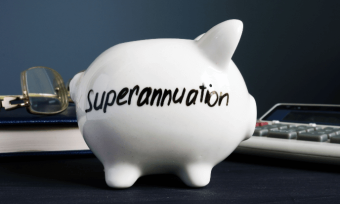As debate continues about the chances of the Super Guarantee’s legislated increase to 12% actually being implemented, Canstar takes a look at what the change could mean for workers’ super balances. Is the average Aussie’s retirement nest egg about to be boosted by $273,000?

By June this year, the Federal Government is due to receive a report about the current retirement income system in Australia.
This has sparked spirited discussions in the media about whether or not the Super Guarantee (SG) – the amount of money employers have to contribute to an employee’s super account, based on their wage – should be lifted to 12% of employees’ regular earnings.
It’s been frozen at 9.5% since 2014, despite originally being scheduled to reach the 12% mark by 1 July last year.
As things currently stand, both the Morrison government and Labor’s policy is to increase the SG rate gradually from 9.5% to 12% by July 2025, but the recommendations of the review could change that.
Some politicians are arguing for an even higher increase, to 15%, while others say it should stay frozen.
Canstar research analysts crunched the numbers to see what the impact could be of such changes to the SG rate.
How could a change to the Super Guarantee impact retirement savings?
Our analysts created a hypothetical scenario of how changes to the SG could influence the average 30-year-old’s super balance at retirement in today’s dollars, assuming their salary grows each year.
The research shows that if the SG remained frozen at 9.5%, a typical full-time worker in this scenario would see their super balance end up at $1,513,319. But if it was increased to 12%, as scheduled, the balance could reach $1,786,648 by retirement age – that’s a difference of $273,329.
An eventual 15% SG increase by 2031, on the other hand, could see retirement savings rise by more than $513,000.
Canstar finance expert Steve Mickenbecker said regardless of where government policy lands on the matter of the SG, consumers still have a level of control over their personal money decisions.
Consumers could, in effect, potentially give themselves a retirement pay rise by making voluntary contributions to their super via salary sacrificing, he said.
“Lifting pre-tax contributions as close to the $25,000 contribution cap as the household budget allows will boost retirement savings,” Mr Mickenbecker said.
“Extra contributions made with discipline and made early in the work life – not just the last five years – is where the biggest difference can be made to retirement savings.”
Differences of opinion: Debate about the Super Guarantee
The SG is a percentage of earnings an employer is required to pay an eligible employee’s super fund to help bolster their retirement savings and supplement the Age Pension. The rate at which it should be paid is a hot topic of debate.
Some critics – including the government’s own backbench and research think tanks – argue that a higher rate of SG would lead to workers receiving lower pay rises because employers would want to balance out the increased cost of compulsory super payments to their business.
Research from the Grattan Institute showed about 80% of the extra money used to pay employees a higher SG would be taken out of pay packets in the form of lower pay rises.
On the other hand, think tank Per Capita found that since the 2014 SG freeze, a worker on a median wage has missed out on $4,332.99 in super, while their take-home wages declined by $1,092 per year in real terms.
Industry Super Australia (ISA) argues the extra money flowing into super accounts could be the difference between a “dignified retirement” with occasional dinners out and one “just scraping by” on the government pension.
ISA Chair Greg Combet said the argument that dumping or delaying the increase would lead to higher wages should be “immediately dismissed as the nonsense it is”.
Opposition Leader Anthony Albanese has pledged to resist attempts to stop the legislated increase, and said he would “absolutely reject” winding back or abolishing super. He’s of the opinion that productivity and economic growth will support higher super and higher wages.
Then there’s the Victorian government, which wants to go even further than increasing the SG rate to 12% increase. It proposed in its submission to the retirement system review that compulsory super payments should rise to at least 15% to help stamp out “discrimination” against women, carers and workers in the gig economy under the current super system.
You might also like:







Share this article